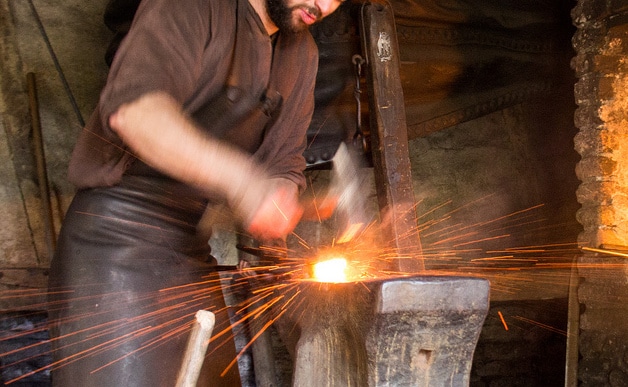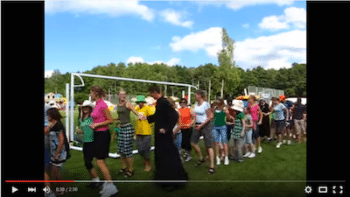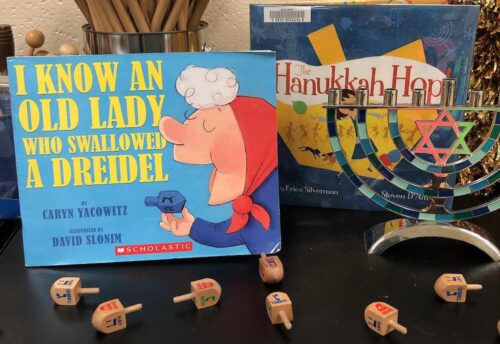
‘t Smidje – A Dance to Make Your Students Go Wild!
 This is a GREAT time of year to be a music teacher. The kids may be bleary-eyed and overwhelmed with state/local/district/whatever tests but you are well on your way to a fantastic new semester. We are in prime workshop season and the ideas are flowing! Many teachers out there are fresh off weekend conferences for state music associations and are bursting with new ideas and resources to try out. Maybe you’ve just had your first weekend workshop at your local Orff/Kodály chapter and you can’t wait to get back and try that great new song you learned. If you didn’t get the chance to go to your state-level NAfME conference then make sure you keep your eyes open for local, weekend workshops in you area. Here’s a list of local Orff workshops that are coming up and might be happening in your area.
This is a GREAT time of year to be a music teacher. The kids may be bleary-eyed and overwhelmed with state/local/district/whatever tests but you are well on your way to a fantastic new semester. We are in prime workshop season and the ideas are flowing! Many teachers out there are fresh off weekend conferences for state music associations and are bursting with new ideas and resources to try out. Maybe you’ve just had your first weekend workshop at your local Orff/Kodály chapter and you can’t wait to get back and try that great new song you learned. If you didn’t get the chance to go to your state-level NAfME conference then make sure you keep your eyes open for local, weekend workshops in you area. Here’s a list of local Orff workshops that are coming up and might be happening in your area.
I wanted to share one of my favorite dances to teach kiddos that is certain to delight and entertain. I learned this dance at my Orff Level I summer training years ago from my fabulous movement teacher, Jennifer Donovan. We experienced it in Level I and when we went back for Levels II and III we would ask to try it out again and would sometimes even dance it out during the breaks between classes. I’ve been thinking of this song a lot recently because it fits right in and is a great “modern” take on a circle dance.
You could absolutely make this the capstone to a unit on circle dances where you include other songs like “Old Brass Wagon,” “Tideo,” and “Skip to my Lou.”Jennifer said that she picked it up a few years ago at an American Orff Schulwerk (AOSA) national conference and that it was a big hit overseas in Europe. I brought it to my local Orff chapter share session and we had a ton of fun with it. It’s fun. It’s fast. It’s a blast! Here is some history and a few resources that might help if you plan to teach it to kiddos!
’t Smidge - Song and History
 Laïs – The group that made ‘t Smidje
Laïs – The group that made ‘t Smidje
’t Smidge (pronounced smidge-EE) is about a young medieval Dutch blacksmith who decides it’s time to get married. He travels to France to find the prettiest woman to marry and take back home. He finds a beautiful woman and weds her but soon he is unhappy again. Apparently she nags him and harps on him day in and day out as the lyrics say that “she never keeps her mouth shut and is never, ever pleased.” He soon realizes that he was happier as a bachelor and he longs for the time when it was just him, his hammer, and his forge.
It seems that the original song and tale of a Blacksmith might be a traditional folk song that evolved from Flemish medieval music. The song was resurrected in 2008 when the folk-rock band Laïs rerecorded it in a version that is slightly more upbeat than your typical folk song. Laïs has a history of taking folk music and updating it with a new beat and contemporary style. Th newly revitalized ‘t Smidje was released on the 2009 album “Documenta” and the song and dance has since gone viral. The lyrics themselves are apparently Dutch. Below you can see a rough translation that I found online about what the words mean.
‘t Smidje lyrics and Translation
wie wil horen een historie
Al van ene jonge smid
Die verbrand had zijn memorie
Daaglijks bij het vuur verhit
Was ik nog, nog met mijnen hamer
Was ik nog met geweld op mijn aambeld
‘k Geef den bras van al dat smeden
Ik ga naar de Franse zwier
‘k Wil mij tot den trouw begeven
Nooit een schoner vrouw gezien
Was ik nog, nog met mijnen hamer
Was ik nog met geweld op mijn aambeld
‘t Is de schoonste van de vrouwen
Maar nooit was er zo’n serpent
Nooit kan zij haar bakkes houden
Nooit is zij eens wel content
Was ik nog, nog met mijnen hamer
Was ik nog met geweld op mijn aambeld
Nooit mag ik een pintje drinken
Nooit mag ik eens vrolijk zijn
Nooit kan ik iemand beschinken
Met een glaasje bier of wijn
Was ik nog, nog met mijnen hamer
Was ik nog met geweld op mijn aambeld
‘k Geef den bras van al dat trouwen
Werd ik maar eens weduwnaar
‘k Zou mij in een hoeksken houden
En mij stellen uit gevaar
Was ik nog, nog met mijnen hamer
Was ik nog met geweld op mijn aambeld
Was ik nog, nog met mijnen hamer
Was ik nog met geweld op mijn aambeld
Who wants to hear a history
of one young blacksmith
And the lessons he learned the hard way Heated daily by the fire.
Oh, I wish I’d never left my hammer.
I would pound upon the iron.
I stopped that hard forging
And traveled off to France.
There I decided to get married
To the prettiest woman I’d ever seen.
Oh, I wish I’d never left my hammer.
I would pound upon the iron.
She really is the prettiest women.
But you’ve never seen such a serpent!
She can never keep her mouth shut,
And she’s never, ever pleased.
Oh, I wish I’d never left my hammer.
I would pound upon the iron.
I can’t even sit and drink a pint.
I think I’ll never again be merry.
I can’t even sit with a friend,
And share a glass of beer or wine.
Oh, I wish I’d never left my hammer.
I would pound upon the iron.
I’ve had enough of being married.
I wish I was still a bachelor.
I just keep out of her way in a corner.
And try to stay out of danger
Oh, I wish I’d never left my hammer.
I would pound upon the iron.
Oh, I wish I’d never left my hammer.
I would pound upon the iron.
‘T Smidge – Teaching the Dance
You don’t have to do much searching or looking to find instructions for this song or some really fun videos of people dancing! The best instructions I found are from the Tucson Folk Dance Society. The dance is still quite popular all over Europe and is apparently nearly identical to several other folk dances, like Allemansmarsj (Sweden), La Chapelloise (France), American Promenade (US) and Humppa Mixer (Finland).The dance notes below are adapted from the Tucson Folk Dancers blog. It’s not easy to read the instructions without having a little prior knowledge of the song. I suggest watching the video and then come back to read the instructions. They make more sense once you have tried the song or at least seen it in action.
Couples in a circle facing Counter Clockwise (CCW), holding nearer hands, Man on the inside (optional).
2. Going backwards (CCW), walk backward for four counts.
3-4. Repeat # 1-2, but in the opposite direction (CW first, then backing up CW).
5. Facing CCW again, come shoulder to shoulder and then go back to your spot “jump in” then “jump out”.
6. Partners trade places, as outside partner “spins on in”
7. Facing CCW again, come shoulder to shoulder and then go back to your spot “jump in” then “jump out”.
8. Progression: “step right up”: Partner on the inside steps up and out (diagonal) to meet a new partner. Partner on the outside steps back and in (diagonal) to meet a new partner.
A Few More Resources
Here is a free handout that I found online that sums up a lot of what I’ve said in the blog post above. It includes a translation of the lyrics and links to some great demonstration videos. You might want this link to a site that hosts an mp3 of the song for free (in case you don’t want to stream it from YouTube) or pay to download the song. It is also available on Spotify and I’m sure can be streamed from a couple other places.
Below I’ve included links to some of my favorite YouTube videos of the song. Definitely check out the video out on the street where a flashmob comes together (or maybe not a preplanned flashmob but just a group that starts and random people just know the dance and join in). Not the best camerawork, but you can absolutely appreciate the spirit of the dance and see how much fun people are having.
Be sure to leave a comment or send me a note on Facebook if you try out this song! As I said, I shared this song and lesson with my local Orff chapter and a few months later at our next workshop a friend told me that she tried it with her kids and they loved it! They keep asking for the “Blacksmith Dance.” I bet your kiddos will love it too.







Pingback: Lesson planning for the upper elementary music room - Aileen's Music Room